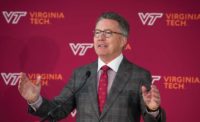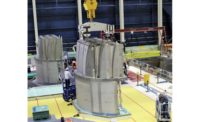As Amazon’s decision to split its second headquarters between New York City and metropolitan Washington, D.C., draws plaudits and scattered criticism about incentives used to lure the e-commerce giant, contractors are weighing the impacts of major new construction programs in what are already the nation’s top two construction markets.
Announced Nov. 13 following a 14-month location search that attracted 238 proposals from cities across North America, Amazon’s plan calls for building 4 million sq ft of new office space in both Long Island City in Queens and Arlington, Va.’s Crystal City and Potomac Yards, across the Potomac from downtown Washington. Each campus will support more than 25,000 workers, and have the capacity for further expansion to 8 million sq ft. Amazon’s total investment will top $5 billion, according to the company.
In addition, Amazon selected Nashville, Tenn., for a 1-million-sq-ft Center of Excellence for operations related to company’s customer fulfillment, transportation, and supply chain activities. The $230-million facility will be located in the historic Gulch district near downtown.
Already anticipating annual area-wide construction spending in excess $53 billion for the next three years, the New York Building Congress nevertheless praised Amazon for providing “a tremendous boost to New York’s economy and stimulate countless industries, from technology and innovation to design and construction.”
Gordon Dixon, AGC of Virginia CEO, is also upbeat about Amazon’s ripple effect on the region’s construction market, which recorded $16.1 billion in new starts during the first half of 2018, according to Dodge Data and Analytics.
“It’s not just a major corporate activity,” Dixon says, “but also higher education, additional businesses and support services.”
While construction on all three projects is expected to begin next year, Amazon has so far provided few details about its procurement plans and processes. Over the past decade, the company’s Seattle headquarters has grown to approximately 8.5 million sq ft, much of which has transformed a former low-rise industrial area north of downtown. Industry observers familiar with the region say the company used locally based contractors for those projects, and expect a similar approach in both New York and Virginia.
Amazon’s agreement with New York development officials calls for at least 1.5 million sq ft of mixed-use office facilities to get underway within 12 months of final approval of a general project plan by state and local regulators. Additional construction would then be completed over the next 48 months, barring unavoidable delays. Along with donating space within its planned 20-acre campus for a tech startup incubator, Amazon will donate a site for a new primary or intermediary public school and invest in infrastructure improvements and new green spaces.
In Virginia, Amazon will initially lease of 500,000 sq ft in three Arlington buildings owned by developer JBG Smith, owner of a 150-acre swath now rebranded as National Landing. Amazon will also purchase four JBG Smith-owned development parcels for new construction.
In addition, Virginia to invest as much as $295 million in previously planned transportation infrastructure projects in and around National Landing, an area already concentrated with multiple high-rise office and residential buildings. They include additional entrances at two Metrorail stations, conversion of the U.S. Route 1, the neighborhood’s primary north-south arterial route, into an urban boulevard, an expansion of the area’s existing transitway and a pedestrian bridge connector to Reagan National Airport.
Another motivator for Amazon’s choice of Arlington is Virginia Tech’s plan to build a new 1-million-sq- ft innovation campus at the southeast end of National Landing. The $1 billion facility will provide academic, research and development facilities to foster partnerships with public and private entities, as well as housing space for students and faculty. George Mason University also plans to spend $125 million on new facilities at its Arlington campus for graduate programs in computer science and related fields.
While the Amazon-fueled construction activity will unfold over several years, so too will the challenge of finding sufficient craft labor in metropolitan Washington’s already tight market. “I anticipate that it will require higher wages, so it will be a costly undertaking,” says AGC’s Dixon. He adds that even with planned transportation improvements, the sheer volume of construction activity in a relatively confined area such as National Landing will present contractors with “a big logistical issue, as well as new pressures on traffic congestion.”
Not everyone in New York and Virginia is wearing the ubiquitous smile of Amazon’s logo, however. Multiple groups in both areas have criticized their respective governments for offering billions of dollars’ worth of public funding to a company recently valued near $1 trillion, as well as an expected upward boost on already steep housing prices resulting from the influx of high-paid workers.
New York will pay $1.525 billion in performance-based incentives over the next years, based on the number of new jobs with an average annual wage of $150,000 or more, building occupancy and other incentives. The company is also eligible for another $1.2 billion in state and local tax breaks, according to the development agreement. Virginia’s package uses a similar formula to pay Amazon $573 million, along with the promised infrastructure upgrades and local tax incentives.
“Projects like these always have political issues,” Dixon says of the pushback. “We’re cautiously optimistic that the plans will move forward.”





